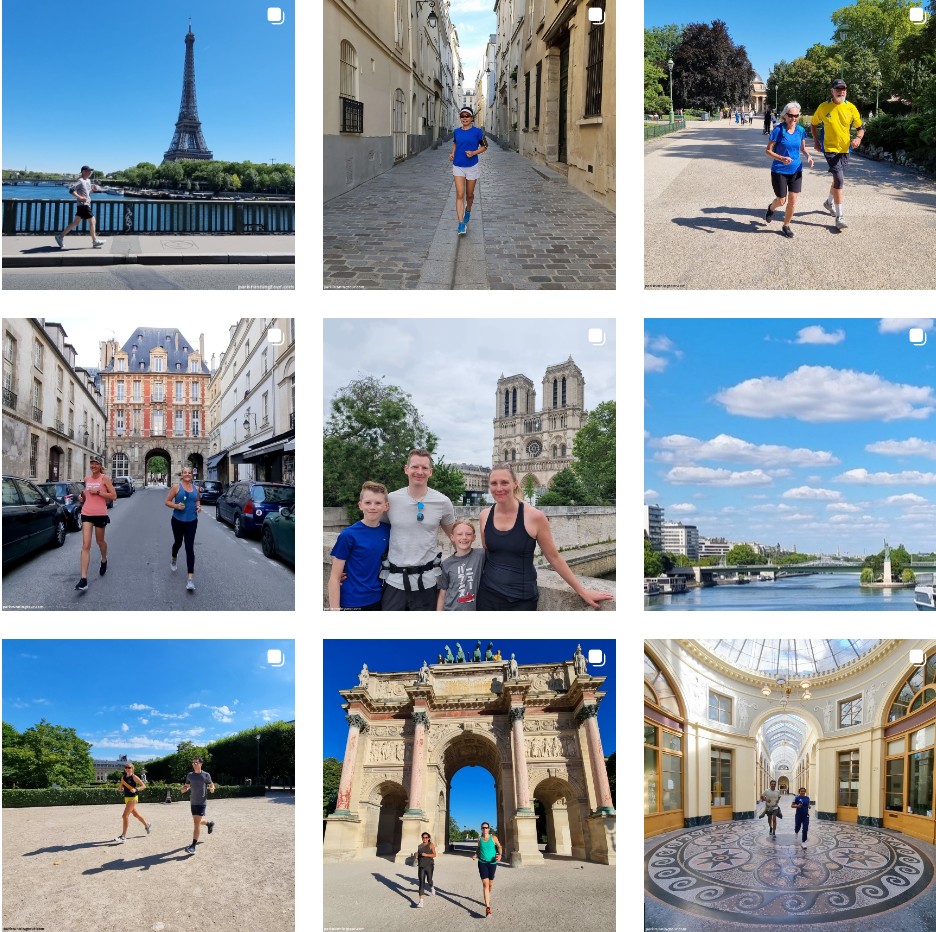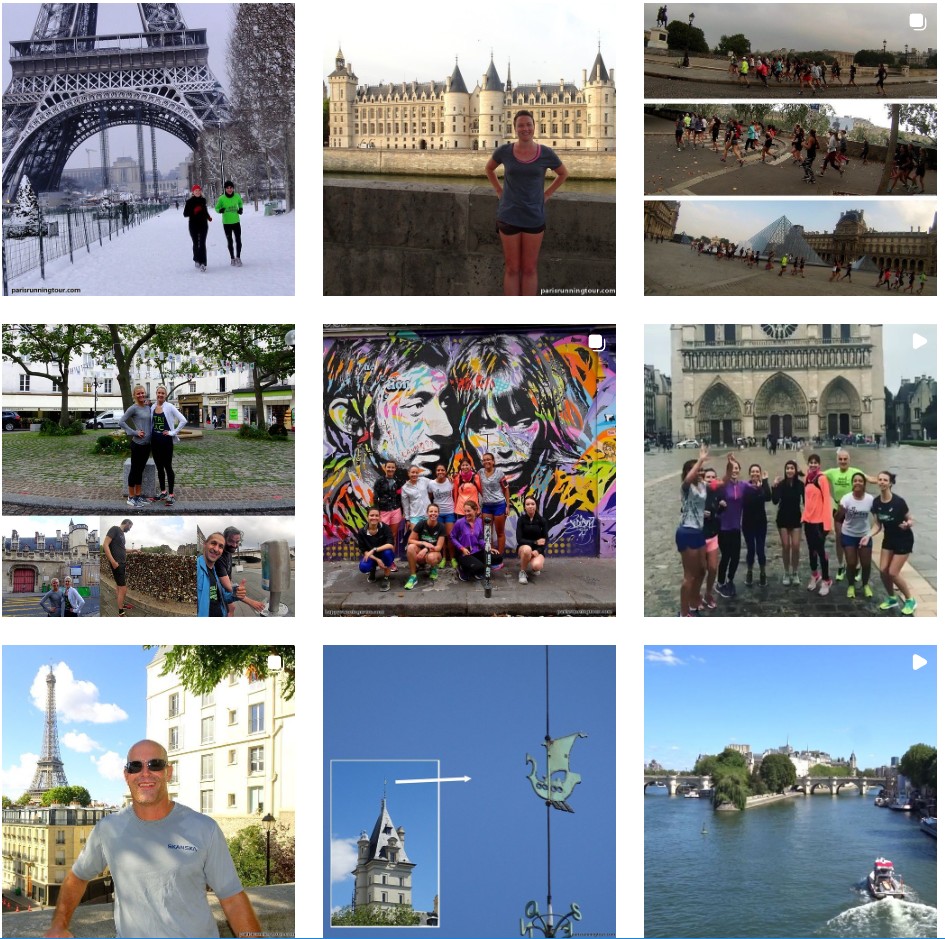 |
| Paris center 1961 - Click on the picture! |
Traduction en français à la fin de l'article
Look at this aerial view from 1961. Many changes since 1961. Will you recognize them?
This is the same view in 2017:
 |
| Paris Centre 2017 - Click on the picture! |
Did you find any differences? If you are on a computer, open both pictures in a different tab (by clicking on them, then switch between them and compare)
Explanations, with visible and less visible differences:
1. The train station of Orsay only became a museum in 1986 and the bank is now pedestrian.
2. The swimming pool,
La piscine "Royal"
3. The Tuileries tunnel does not exist yet in 1961
4. The "Place Vendôme" was a large open-air parking lot (it has now more pedestrian areas)
5. The Saint Honoré market is now a new glass complex
6. The gardens behind the Arc du Carrousel that have now lost their "French garden" style
7. The Carrousel Square has been transformed (under the new central square, the inverted pyramid!)
8. Trees and the open-air parking lot have given way to the Pyramid
9. The Ministry of Finance left the Louvre for Bercy and its open-air parking lots gave way to the beautiful Marly and Puget courtyards and their nice historical sculptures.
10. Small changes in the square courtyard with some greenery in 1961, the old dungeon in the basement has not been rediscovered.
11. The gardens have disappeared.
12. The pedestrian bridge the "Pont des Arts" is no longer the same, it was rebuilt in the early 1980s (remember the Pont des Arts collapsed in 1979 following a collision with a boat...)
13. The shoreline track (George Pompidou track) is not yet there. Created for car traffic in 1967, the track is pedestrian on the east since 2016.
14. In 1961, "La Samaritaine" is still a department store in the capital, after its financial difficulties and its closure in the 2000s, it is currently a major work site for a new life of the building...
14.b. The Central Post Office of the Louvre is currently undergoing a complete renovation
15. The "Bourse de Commerce" is currently under construction to become the Pinault Foundation's Art Centre.
16. In 1961, buildings were present east of the "Bourse de Commerce".
17. The "Halles de Baltard" are clearly visible. These large metallic structures housed the large market of "Les Halles de Paris", which continued to decline in 1961. They will soon disappear. After many changes, we recently got the "Canopée"...
18. In the place of the future "Centre Pompidou", a large open-air parking lot. Renzo Piano's project will win the international architectural competition to create the "Centre national d'art et de culture Georges-Pompidou" (it would have been selected because it did not propose to occupy all the available space and leave room for a large square).
19. The Stravinsky Fountain by Niki de Saint Phalle and Jean Tinguely does not yet exist.
20. The square in front of the "Hotel de Ville" was more dedicated to car traffic, it is now largely pedestrian.
21. The buildings at the the north of the future "Centre Pompidou" will give way to the "Quartier de l'Horloge".
22. The "Bibliothèque Nationale" (National Library) will become the "Bibliothèque Nationale de France" and will give the current buildings near the Seine. The "Richelieu" site (here on the picture) is still subject to many modernizations.
23. The main courtyard of the "Palais Royal" is an open-air parking lot. The replacement of this parking lot by the famous Buren columns ("Les Deux Plateaux") in 1986 created a major controversy...
24. The "Place du Palais Royal" was then an open-air parking lot.
There are probably other differences. I look forward to your comments....
You will notice that the expression "open-air parking lot" has often been used in this article... Since then, fewer cars and more underground parking lots...
The square in front of Notre Dame was also an open-air parking lot! Paris will make an underground car park to free the square but not exactly where it was planned because while digging, streets of the Roman city of Lutetia were rediscovered!
---
En français :
Différences visibles et moins visibles :
1. La gare d'Orsay ne deviendra un musée qu'en 1986 et la berge est maintenant piétonnière
2. La
piscine "Royal"
3. Le tunnel des Tuileries n'existe pas encore
4. La place Vendôme était un grand parking à ciel ouvert (elle a, depuis, plus d'espaces piétonniers)
5. Le marché Saint Honoré est maintenant un nouvel ensemble en verre
6. Les jardins derrière l'Arc du Carrousel qui ont maintenant perdu leur style "jardin à la Française"
7. La place du Carrousel s'est transformée (sous la nouvelle place centrale, la pyramide inversée)
8. Les arbres et le parking à ciel ouvert ont laissé la place à la Pyramide
9. Le ministère des Finances a quitté le Louvre pour Bercy et leurs parkings à ciel ouvert ont laissé la place aux belles cours Marly et Puget et leurs belles sculptures
10. Petits changements dans la cour carrée avec un peu de verdure en 1961, le vieux donjon en sous-sol n'a pas été redécouvert
11. Les jardins ont disparu
12. Le Pont des Arts n'est plus le même, il a été reconstruit au début des années 1980 (vous souvenez-vous du Pont des Arts effondré en 1979 suite à un choc avec un bateau...)
13. La voie sur berge (voie George Pompidou) n'est pas encore là. Créée pour la circulation automobile en 1967, la voie est totalement piétonnière depuis 2016.
14. La Samaritaine est toujours un grand magasin de la Capitale en 1961, après ses difficultés financières et sa fermeture dans les années 2000, c'est actuellement un grand chantier pour une nouvelle vie...
14.b. La Poste centrale du Louvre est actuellement en complète rénovation
15. La Bourse de Commerce est actuellement en chantier pour se transformer en centre d'Art de la Fondation Pinault.
16. En 1961, des bâtiments étaient présents à l'est de la Bourse de Commerce.
17. Les Halles de Baltard sont alors bien visibles. Ces grandes structures métalliques abritaient le grand marché des Halles de Paris qui continuait de décliner. Elles ne vont pas tarder à disparaître.
18. A la place du future Centre Pompidou, un grand parking à ciel ouvert. C'est le projet de Renzo Piano qui gagnera le concours international d'architecture pour créer le Centre national d'art et de culture Georges-Pompidou (il aurait notamment été retenu car il ne proposait pas d'occuper tout l'espace disponible en laissant la place pour un parvis).
19. La Fontaine Stravinsky de Niki de Saint Phalle et de Jean Tinguely n'existe pas encore.
20. Le parvis de l'Hôtel de Ville était plus dédié à la circulation automobile, il est maintenant en grande partie piétonnier.
21. Les bâtiments au nord du futur Centre Pompidou vont laisser place au quartier de l'Horloge.
22. La Bibliothèque nationale va devenir la Bibliothèque nationale de France et donner les bâtiments actuels près de la Seine. Le site "Richelieu" (ici sur la photo) est encore sujet à de nombreuses modernisations.
23. La cour d'honneur du Palais Royal est un parking à ciel ouvert. Le remplacement de ce parking par les fameuses colonnes de Buren ("Les Deux Plateaux") en 1986 créera une grosse polémique...
24. La place du Palais Royal est alors un parking à ciel ouvert.
Il existe sans doute d'autres différences. J'attends vos commentaires...
Vous remarquez que l'expression "parking à ciel ouvert" a souvent été employée... Depuis, moins de voitures et plus de parking souterrains (Le parvis de Notre-Dame était aussi un parking en plein air ! Paris va créer un parking souterrain pour libérer la place mais pas exactement là où cela était prévu car en creusant, les rues romaines de la ville de Lutèce ont été redécouvertes !).





























